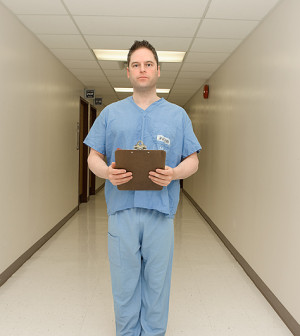- Navigating Your Midlife Crisis: Embracing New Possibilities
- City Raccoons Showing Signs of Domestication
- Mapping the Exposome: Science Broadens Focus to Environmental Disease Triggers
- One Week Less on Social Media Linked to Better Mental Health
- Your Brain Changes in Stages as You Age, Study Finds
- Some Suicide Victims Show No Typical Warning Signs, Study Finds
- ByHeart Formula Faces Lawsuits After Babies Sickened With Botulism
- Switch to Vegan Diet Could Cut Your Greenhouse Gas Emissions in Half
- Regular Bedtime Does Wonders for Blood Pressure
- Dining Alone Could Mean Worse Nutrition for Seniors
More Cervical Cancers Caught Early Among Young Women Since Obamacare

More cervical cancers have been caught early among young U.S. women since a key provision of the Affordable Care Act went into effect, a new study finds.
The rule, which took hold in September 2010, ensures that adults aged 19 to 25 have the option of remaining on their parents’ health insurance.
No similar shift in cervical cancer diagnosis was seen among 26- to 34-year-olds, whose insurance coverage was unaffected by the rule.
Researchers said they can’t be sure that the credit should go to the rule, one of the least controversial aspects of what’s known to some as “Obamacare.”
However, early stage cervical cancer is caught through routine Pap tests, starting at age 21. So it’s possible that the rule improved young women’s rates of cervical cancer screening, said researcher Xuesong Han, who directs surveillance and health services research for the American Cancer Society.
“This suggests the dependent coverage expansion has helped young women access preventive services,” Han said.
The study, published Nov. 24 in the Journal of the American Medical Association, did not look directly at young women’s screening rates.
But other studies have found evidence that young U.S. adults now have better access to health care.
Brendan Saloner, a researcher at Johns Hopkins Bloomberg School of Public Health in Baltimore, led a recent study on mental health treatment among young Americans.
The study found that among 18- to 25-year-olds with mental health symptoms, the number seeking treatment rose after the dependent-coverage rule went into effect. That was in contrast to people aged 26 to 35, whose treatment rates dipped.
“I think at this point, we know that the dependent-coverage provision has increased young adults’ access to care,” Saloner said.
“But what we really want to know,” he added, “is whether this surge in the number of people going to the doctor’s office actually improves their health.”
So the new study is “pretty exciting,” Saloner said, in that it measured an objective health outcome.
For the study, Han’s team used a national database that captures about 70 percent of all cancer cases in the United States each year. They looked at cervical cancer diagnoses among women aged 21 to 34, both before and after the dependent-coverage rule went into effect.
Among 21- to 25-year-olds, the study found, the proportion of women diagnosed with early stage cancer grew after the provision took hold: From 2007 to 2009, early stage tumors accounted for 68 percent of all cervical cancers; by 2011, that proportion had grown to 84 percent.
The proportion of early stage cancers did decline again in 2012, to just over 72 percent. But Han offered a potential explanation: In 2011, the first full year of the rule, there may have simply been more early stage cancers out there to detect.
Saloner said that’s plausible. But he also stressed that the limitation of this study — and his own — is that it can’t discount the role of other shifts in health care and insurance coverage.
“It’s always possible that trends other than the ACA [Affordable Care Act] provision influenced this,” Saloner said.
In fact, the study did find a trend that seemed to be, at least in part, independent of the ACA provision: Over time, more young women were receiving fertility-sparing treatment — such as less-extensive surgery — for their cervical cancer.
That upward trend was already happening between 2007 and 2009, Han pointed out. She said she suspects that the continuing increase post-ACA probably reflects two things: advances in cervical cancer treatment and the rising rate of early stage diagnoses.
For young women, Han said the most important thing is to be aware that Pap tests are recommended starting at age 21.
And, owing to another ACA provision, there are no copays. “So now it’s cost-free,” Han said. “That removes another potential barrier.”
More information
The American Cancer Society has more on cervical cancer screening.
Source: HealthDay
Copyright © 2025 HealthDay. All rights reserved.










